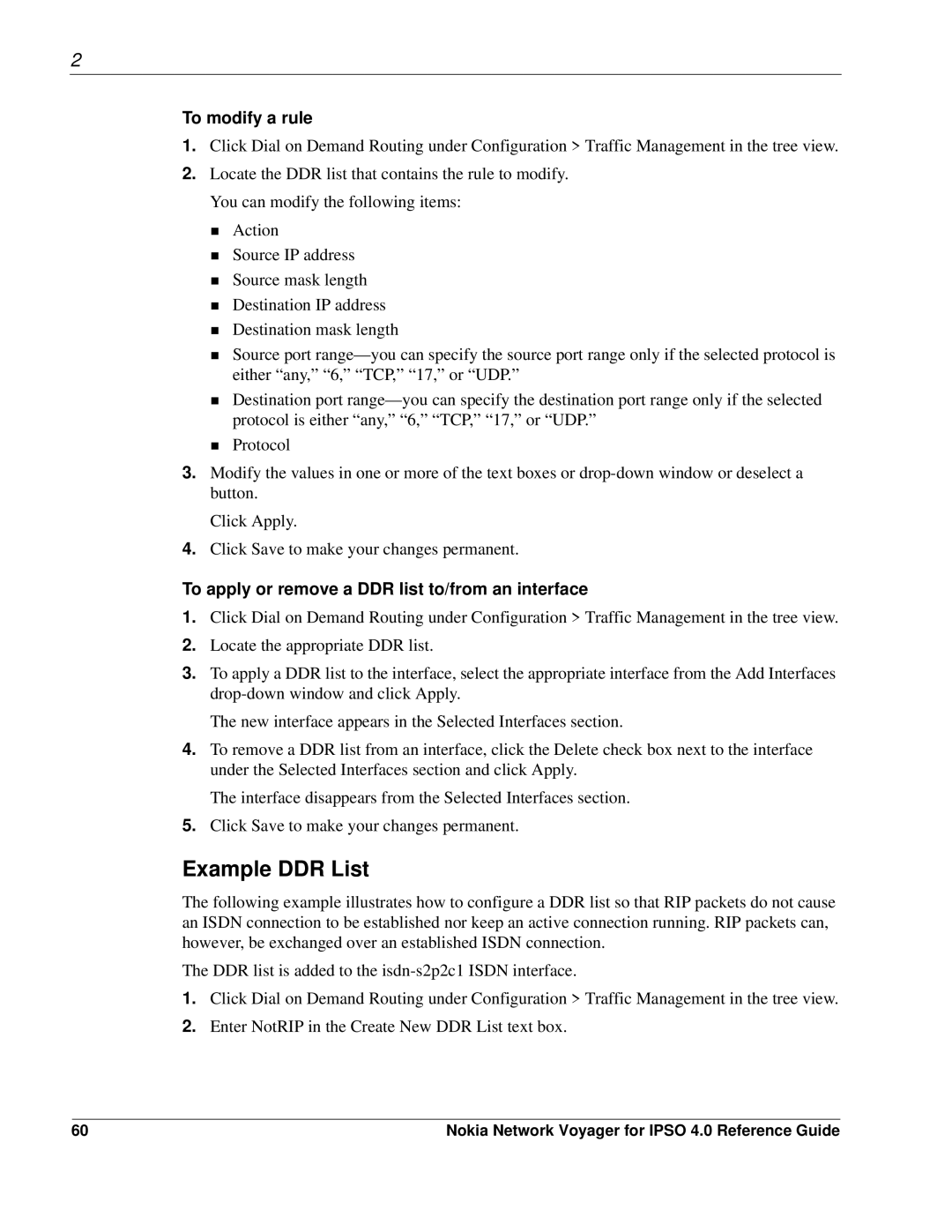
2
To modify a rule
1.Click Dial on Demand Routing under Configuration > Traffic Management in the tree view.
2.Locate the DDR list that contains the rule to modify. You can modify the following items:
Action
Source IP address
Source mask length
Destination IP address
Destination mask length
Source port
Destination port
Protocol
3.Modify the values in one or more of the text boxes or
Click Apply.
4.Click Save to make your changes permanent.
To apply or remove a DDR list to/from an interface
1.Click Dial on Demand Routing under Configuration > Traffic Management in the tree view.
2.Locate the appropriate DDR list.
3.To apply a DDR list to the interface, select the appropriate interface from the Add Interfaces
The new interface appears in the Selected Interfaces section.
4.To remove a DDR list from an interface, click the Delete check box next to the interface under the Selected Interfaces section and click Apply.
The interface disappears from the Selected Interfaces section.
5.Click Save to make your changes permanent.
Example DDR List
The following example illustrates how to configure a DDR list so that RIP packets do not cause an ISDN connection to be established nor keep an active connection running. RIP packets can, however, be exchanged over an established ISDN connection.
The DDR list is added to the
1.Click Dial on Demand Routing under Configuration > Traffic Management in the tree view.
2.Enter NotRIP in the Create New DDR List text box.
60 | Nokia Network Voyager for IPSO 4.0 Reference Guide |
